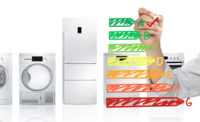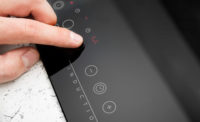The Collateral standard IEC 60601-1-111, is the international standard that applies to the basic safety and essential performance of medical electrical equipment and systems manufactured for use in the home healthcare environment. The requirements are due to the nature of the home healthcare environment, particularly since the assumption is that equipment operators are not medically trained professionals and possess no more than eight years of education. In short, the home healthcare environment requires that extra safety, communication and operational precautions need to be put in place, to prevent harm from occurring to patients, bystanders, and property.
With the June 1, 2012 compliance date for the European Union now past, how does this affect compliance with 60601-1-11? 60601-1-11 is a collateral standard to the 60601-1 general standard and, in accordance with clause 1.3 of 60601-1, collateral standards become normative on the date of their publication. So does this mean that that compliance with 60601-1-11 is required by June 1, 2012? The recommendation is that Notified Bodies give the manufacturers until June 1, 2013 to comply with the requirements of 60601-1-11, but this is up to the individual Notified Bodies to determine what they will require to show conformity with the Medical Device Directive. If your product is going to be tested and certified for Europe, Intertek is able to evaluate it for the U.S. and Canada as well, since any possible deviations will have minimal impact at this point.
What Constitutes Home Healthcare?
A home healthcare facility is a dwelling place in which the patient(s) lives or is present, and where operators with medical training are not continually available. One significant difference between the International and ANSI/AAMI[2] version of the standard is that, in the United States, nursing homes are considered professional healthcare facilities, not home healthcare. These requirements indicate that the home healthcare equipment could be used indoors or outdoors while in operational state, requiring additional safety features normally not required for medical devices.
Essential Performance Philosophy
Essential Performance (EP) refers to the performance necessary to achieve freedom from unacceptable risk. The standard also notes, “Essential performance is most easily understood by considering whether its absence or degradation would result in an unacceptable risk.”
While most of the standard remains technical in nature, the new standard is also risk-based, focusing on what the chances are of failure in a particular situation and determining the hazard potential of that error. For example, the probability of an oxygen generator being bumped by a visitor may be higher than the chance of its alarm system failing, but the risk formula needs to account for the much greater consequences associated with the failed alarm and resultant decreased oxygen level, i.e. failure probability compared to hazardous consequences.
The manufacturer must establish these risk scenarios and assessments and document them in the risk management file. For example, the risk of electrical shock must be applicable to both the patient and the operator.
Testing Category Considerations
Due to the uncertainty on how the equipment will be operated in a home healthcare environment, additional requirements not considered in a professional healthcare environment need to be considered. Clauses 4, 5 and 6 describe how testing parameters vary according to different applications and conditions. Some of these include testing against specifications for:
-
Environmental conditions, for operation, such as humidity levels, temperature and atmospheric pressure
-
Thermal conditions for transport and storage
-
Electrical supply
-
Shock potential for small or normal probing fingers
Another significant requirement is that for connection to a power source, there can be no protective earth connection except for equipment that has been permanently installed by an electrician, and equipment must be Class II (double-insulated to further prevent electric shock) or internally powered.
Additional IP Classification Requirements
Ingress Protection (IP) ratings are required for electrical products that are body-worn, hand-held, mobile, or portable. The IPXX rating considers both protection from solid foreign objects and water. This takes into consideration that the product can be used outdoors in a rain storm. The products enclosure should provide the minimum ingression protection, but if the carrying case provides protection against ingress of liquids, it should be marked as such. The enclosure is then marked, “Keep Dry,” or carries the umbrella-in-rain icon.
-
An IP22 rating means the product is protected from 12.5 mm or greater foreign objects and vertical drip with the product tilted 15°.
-
An IP21 rating meets the product is protected from 12.5 mm or greater foreign objects and vertical drip.
Usability and Instructions for Use – Simple & Comprehensive
60601-1-11 is highly focused on the uninitiated user’s ability to understand and operate the equipment properly. The standard stresses that equipment in the home healthcare environment should be designed for simplicity and ease of use. Reference documents should be simplified and readily understood by both lay and professional operators. They should include diagrams, illustrations or photographs that clearly demonstrate the controls and procedures. Instructions for Use should be composed so that a lay operator with eight years maximum education can read, comprehend and master the product accordingly. These issues are described in the Clause 7 section.
Simplicity of content aside, 60601-1-11 also mandates numerous areas that must be included in the instructions, such as setting up, operating, maintaining and contacting the manufacturer for assistance. It also must include any contraindications to the equipment and precautions to take regarding changes in performance, exposure to foreseeable environmental conditions, information on medicinal substances, measuring functional accuracies, and the like. (The latter was derived from the increasing availability of medical devices to consumers in “mass market” stores, which lacked consistent specifications and accuracies.) The IFUs are required to contain warnings describing the nature of each possible hazard, its potential consequences, and the precautions for reducing risk (including unsafe practices). Warnings should also address any potential strangulation hazards, allergic reactions and contact injuries.
The Clause 7 series of mandates is very specific on each of the above areas. It also goes into detail on the operation of the equipment and covers areas like:
-
How quickly the equipment is operable after being turned on
-
Effects of lint, dust, light, devices that could cause interference or parts degradation
-
The presence of pets and children
-
IP ratings and explanations
-
Troubleshooting
-
Cleaning and storage
-
Multiple patient usage
-
Equipment service life
-
Parts disposal
-
Alarm placement
-
Protective earth conductor
-
Hygienic maintenance for reuse
In short, 60601-1-11 places a great emphasis on safe and effective use by professional operators and lay operators alike. Its intention is to protect both the patient and the operator, and to ensure safe, fault-proof operation while providing backup troubleshooting and emergency procedures. The equipment, operational processes and communication must meet these standards both in comprehensiveness and simplicity.
Power Supply, Interruption and Interference
Another aspect of the Essential Performance criteria for 60601-1-11 requires measures and capabilities in life-supporting equipment to provide a safety backup should the power supply be interrupted. In a power outage, life-supporting equipment should remain operable for a sufficient time or number of operations to deploy alternate methods. This can be through an automatic activation of an internal electrical power source, or through independent means. The Instructions for Use must disclose the time allotment and/or provide procedures for life-support during a power outage. A specified alarm system also needs to be in place, audible throughout the facility and with identifiable warning indications. If a shutdown is imminent, an operator should not have to proactively discover the threat and know what action to take.
Likewise, internal power sources must warn of possible operation stoppages by indicating the remaining operating time, number of remaining procedures, available fuel, and the like. If wireless communication can impair operations, it must be stated in the Instructions for Use.
Other Testing and Safety Areas
60601-1-11 prescribes several mechanical tests including drops, vibration, molding stress relief, shocks and more. These are applied to everything from large stationary systems to small mobile devices. Provisions also must be included in the Usability Engineering Process and File for the accuracy of the controls and instruments, and for the protection against hazardous outputs. This needs to account for changes in controls, improper operation, exposure to biological materials and more. Medical electric enclosures must prevent ingress of water or particulates. Wiring, tubing and more must provide prevention from the risk of strangulation or asphyxiation by patients and children. Access to critical controls must be limited to authorized personnel through passwords, unique tools, fingerprint recognition and the like.
The Fast Approaching Deadline
If all these changes seem daunting, especially if your organization is already burdened with ongoing operations, Intertek can be a valuable time- and cost-saving partner. There may also be a last minute rush by other manufacturers causing a potential supplier bottleneck which may delay your ability to market your product.
Expertise can be invaluable, given the number of complexities in the new home healthcare standard. Intertek forms a valuable partnership with clients, offering easy access to experienced medical device testing engineers. Another asset for clients is global market prowess, offering access and solutions to more markets. By getting Intertek involved early in the design process, Intertek can help avoid delays, minimize costs, speed up the process and increase the chances of successful certification in the first pass.
References:
1 National versions of the standard includes ANSI/AAMI (USA), CSA (Canada), and CENELEC EN (EU)
2 It is presumed that medically trained operators are continually available for patients in a nursing home, disqualifying them as home healthcare environments



